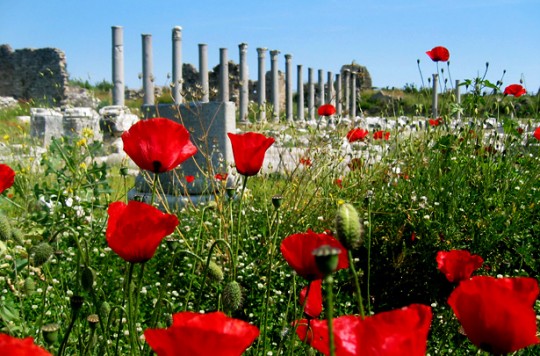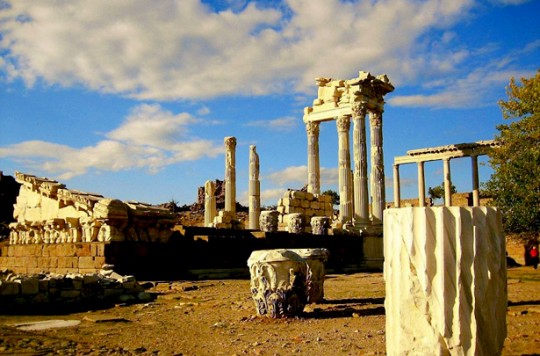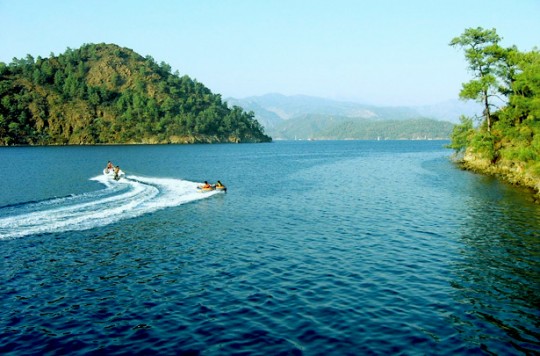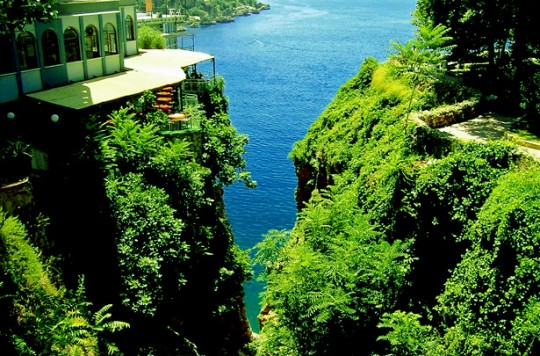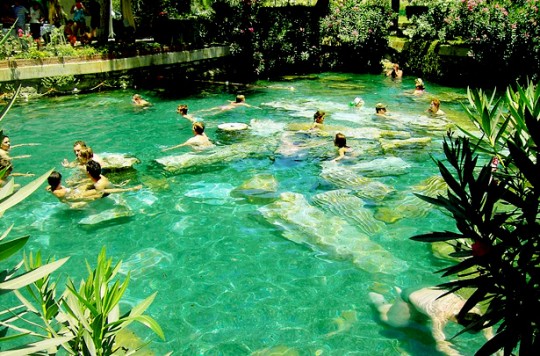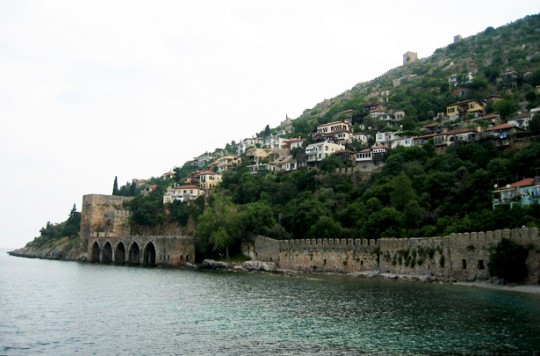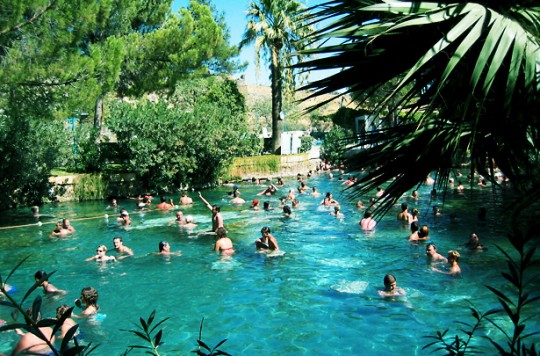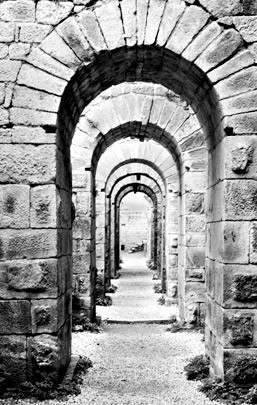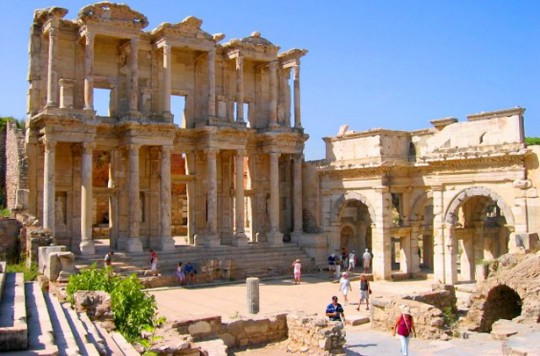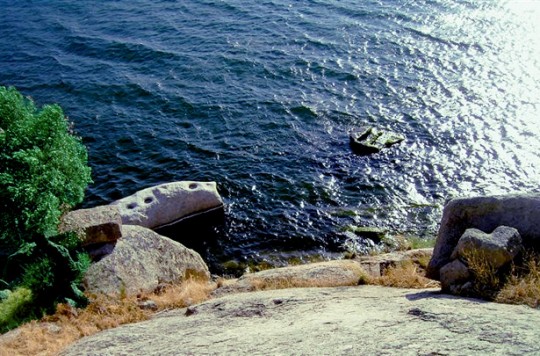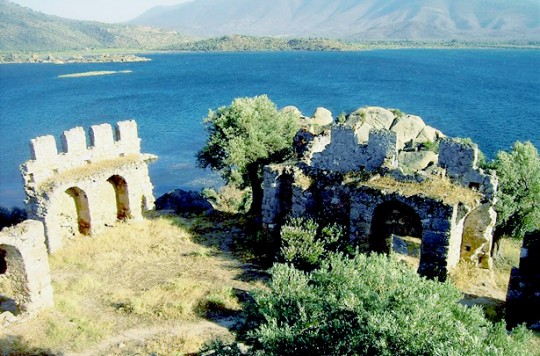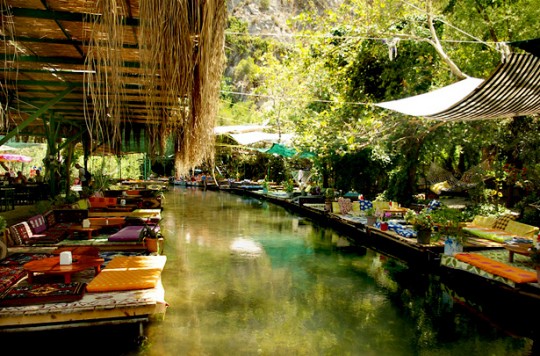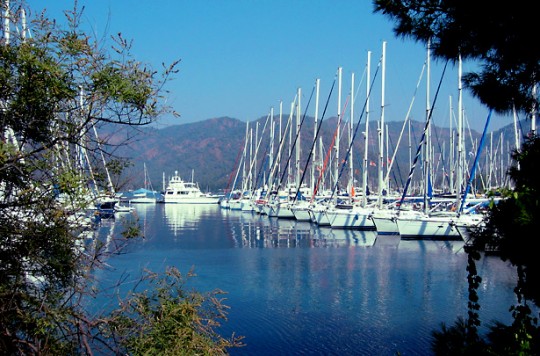TURQUOISE COAST
Turquoise Coast, to have a vacation in Antiquity…
The blue waters that caress Turkey’s western and southern coastline have given their name to the entire region. These lands were once home to many great civilizations, empires and states, out of which sprung some of the world’s finest mathematicians, scientists, architects and sculptors.
Today a visitor wandering through the ruins of the region spread like an open-air museum, can sense how this land was once a cradle of civilizations, inspiring admiration and fascination throughout the ages. Indeed, the Aegean coast of Turkey encompasses the world’s richest collection of historical cities. Ancient ruins and monuments down to south are;
Bursa was originally called Prusa after its founder Prusias I (228-185 BC), king of Bithynia. According to legend, Hannibal, the great Carthaginian general and enemy of Rome, helped him to choose the site. The last king of Bithynia, Nicomedes IV, left his kingdom to Rome in 74 BC. 1326 it was finally conquered by the Ottoman sultan Orhan Gazi who made it his capital. Although the Ottomans later moved their capital first to Edirne and later to Constantinople, Bursa retained its favorite status. Its mineral springs, known to the Romans and Byzantines, were also appreciated by the Ottomans who built a number of luxurious Hamams (public baths) here.
Troy, Homer’s legendary citadel! Assos, was founded by immigrants from Methymna in the first millennium BC. Pergamon, famous for its Hellenistic school of sculpture with its library, which held 200,000 books and parchment used for centuries as writing material rivaled that of Alexandria. Izmir (Smyrna), Ephesus, Turkey’s most important antique city, and one of the best preserved and restored. Dating back 3,000 years, one can still stroll for hours along its streets, past temples, theatres, libraries, houses, and statues. This was a place for cults. Cybele, the Goddess of Anatolia, was replaced by Artemis for whom the most sumptuous temple was built in Ephesus, considered to be one of the seven wonders of the ancient world.
Sardis, Priene, Miletus, Didyma, Hierapolis, Pamukkale (Cotton Castle). Laodicea enjoyed a brilliant period in early Christian’s times, where an important Christian council was held in the 4th century A. D.
Aphrodisias, the capital of Caria, is one of the most significant sites discovered by modern archaeologists. The excavations, initiated in 1904 have continued ever since, to unearthed superbly preserved monuments and artifacts: a theatre, an odeon and the most beautiful stadium in antiquity. The stadium, where athletic games were once held, is 262 meters long and 59 meters wide and can seat 30,000 people. Aphrodisias was indeed an intellectual and cultural centre, attracting people who came to study philosophy, astronomy and medicine. And many others…
During the last few decades the small town of Bodrum has become one of the most popular resorts in Turkey, both for local and foreign visitors The town, with its picturesque whitewashed houses, shop lined streets, restaurants, discotheques, sophisticated bars and cafes for all ages and testes, is always lively whatever the season. This is ancient Halicarnassus, birthplace of the famous historian Herodotus, a place known in antiquity for being the site of one of the Seven Wonders of the World, the Mausoleum, a gigantic tomb erected for King Mausolus in the 4th century BC, destroyed by successive earthquakes, the stones of the Mausoleum were used by the Knights of St. John to build their Castle nearby. Since the 1960’s the castle houses the Bodrum Underwater Archaeology Museum and serves as the headquarters of a group of Turkish and American marine archaeologists who recover ancient shipwrecks from the sea bottom. They received the National Geographic Award twice for their projects, which include the oldest-known (15th c. BC) shipwreck in the world, recovered from the sea-bed around the town of Kas.
Blue Cruise; The area between Bodrum and Antalya is the prime destinatiom for yachtsmen and for visitors who want to charter one of the classical “gullets” of the region. These wide-hulled boats, unique to places like Bodrum, Marmaris and further Mediterranean, usually offer tiny but-ship shape cabins and yet ultra-generous deck space for lounging, dining and sun bathing.
Cruises are a unique opportunity to enjoy these beautiful bays and coves that could only be reached through the sea, to swim in unpolluted waters in a myriad of shades of blue, to visit magnificent antique sites such as Knidos, to spend nights on board contemplating the moonlit and star filled skies and for those who so wish to sleep out on the deck!
The Mediterranean coast of Turkey is one of the world’s most beautiful regions. With its sandy beaches offering eight months of swimming, its serene landscapes, its great gaggle of historic and pre-historic sites, it offers astonishing variety.
Tourism is not its sole economic activity. Thanks to its temperate Mediterranean climate, the region has a rich and abundant agriculture and produces citrus fruits, bananas, avocados, cotton, vegetables and flowers.
Fethiye, a sheltered town… The surrounding area is rich with beautiful coves and valleys. Places not to be missed include Butterfly Valley, home to thousands of butterflies, and Saklıkent, reached only by wading through the ice-cold waters straight from the mountains. Ölüdeniz, or the Dead Sea, takes its name from the still waters which separate the lagoon from the sea itself. The calm blue waters and the rugged mountains, makes the area one of Turkey’s most beautiful regions.
Kas, besides its natural beauty the town became particularly popular as a convenient base to explore the nearby island of Kekova, famous for the ruins of the so-called sunken city. These are the ruins of some ancient buildings on the coast of the island, which now lie under water, possibly because of earthquakes and a change in water level.
Antalya, situated at the end of the Gulf to which it has given its name is spread over a green plateau that plunges dramatically into the sea. Its glorious sandy beaches, Konyaaltı in the west and Lara in the east, are several kilometers long and are lapped with crystal clear waters.
The city was founded in 158-138 BC by Attalus II, King of Pergamun, and was later bequeathed the Roman Empire and encircled by strong protective walls. Antalya has witnessed a turbulent history, marked by numerous attacks and invasions until it was annexed by the Ottoman Empire.
Today, it is one of the world’s best-loved touristic resorts, with numerous five-star hotels, holiday villages and entertainment establishments.
The proximity of a great number of archaeological sites and ruins enhances its appeal, as does the possibility for skiing in the mountains and then descending to the shore for a swim.
Perge, the ancient city dedicated to goddess Artemis and Aspendos, is crowned by the world's best preserved amphitheatre, both are in the area.
Turquoise Coast, to have a vacation in Antiquity…
Turkey’s Turquoise Coast from the Air
Video Source: GO TURKEY



